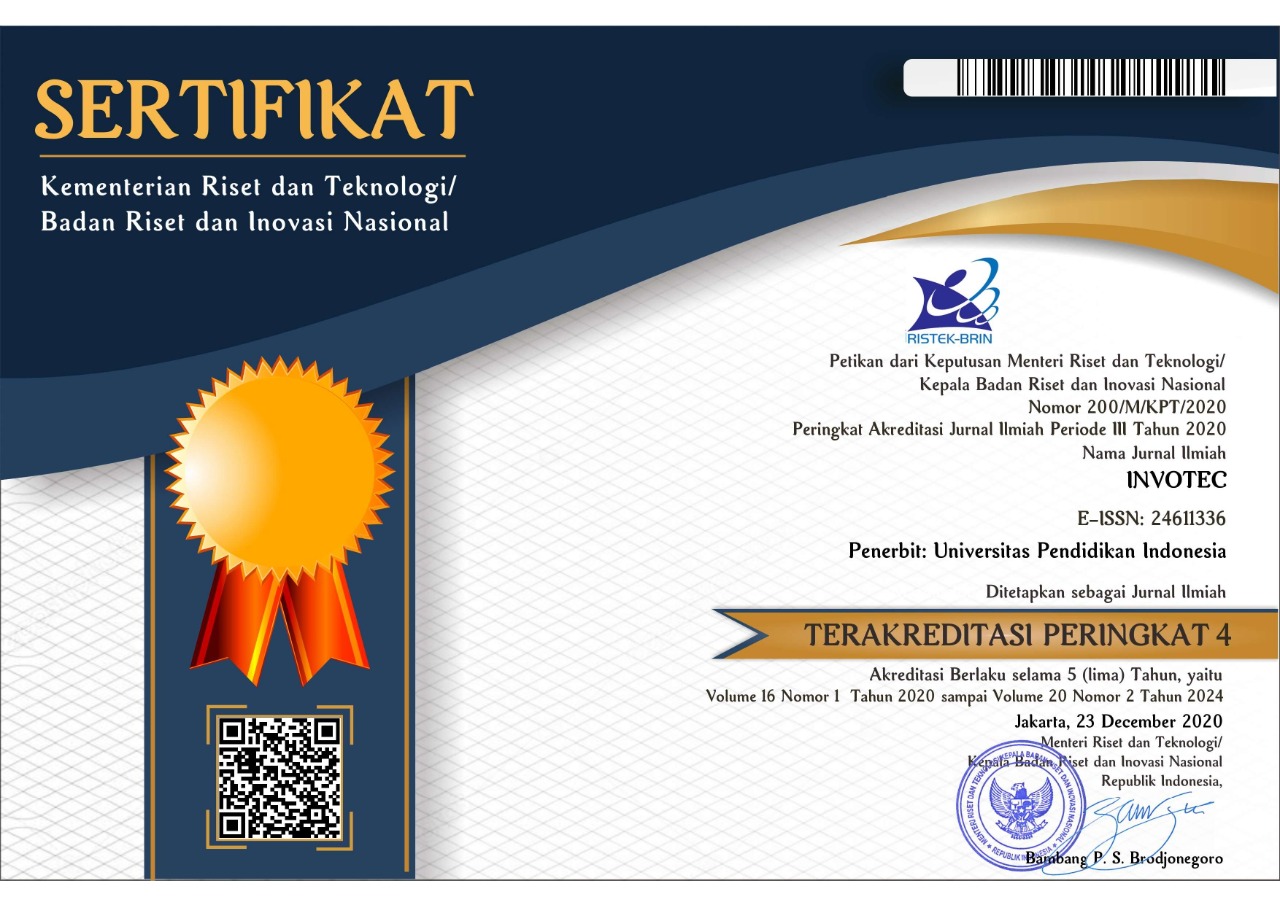Relationship between Apprenticeship Training with Information and Communication Technologies at Vocational High School in West Java Province
Abstract
The aim of vocational education is to produce employees who are ready to work, a characteristic of vocational education is through the implementation of apprenticeship. In the period 2010-2015 in Indonesia the labor force declined from vocational schools compared to senior high schools. This indicates the need for 21st century skill is called a tool for work, namely the skill to use Information and Communication Technologies (ICT). This article is intended to find out the relationship between apprenticeship and ICT in vocational students who carry out apprenticeship in the province of West Java. From the instrument distributed in 520 samples, it was found that there is a relationship between apprenticeship training and ICT through the value of Zcount = 7.16 > Ztable = 2.58, with the coefficient of determination of (ry)2 = (0.315)2 = 0.0992. This shows that apprenticeship contributions affect ICT skill by 9.92% for students who carry out apprenticeship in the West Java province of Indonesia, while 90.08% is influenced by other factors.
Keywords
Full Text:
PDFReferences
Anderson, R. E., and Plomp, T. (2008). National Contexts. Comparative Education Research Centre.
Gonon. (2011). Distinctiveness and Diversity Within Vocational Education. Science+Business Media. Australia.
Hendarman. (2016). Revitalisasi Pendidikan Vokasi. Jakarta: Kementerian Pendidikan dan Kebudayaan Republik Indonesia.
Hinkelmann, K. et. al, (2006). Linking Communities of Practice with Learning Communities in Computer Science Education. Education for the 21" Century-Impact of ICT and Digital Resources. Switzerland.
Horn, D. (2015). The effectiveness of apprenticeship training: A within-track comparison of workplace-based and school-based vocational training in Hungary. Hungary.
Kidwell, F. L., and Thomas, M. (2012). Lessons from Germany and the Future of Vocational Educatio. West Germany.
Lustigova, Z. (2006). Role of Online Supportive Environment in Professional Development of In-service Teachers-Case of TELMAE. Education for the 21" Century-Impact of ICT and Digital Resources. Czech Republic.
McMahon, M. and Patton, W. (2012). Technical and Vocational Education and Training in the 21st, Building Positive Work Habits and Attitudes. France: UNESCO.
Ng'ambi, D. (2006). Influence of Individual Learning Styles in Online Interaction: a Case for Dynamic Frequently Asked Questions (DFAQ). Education for the 21 Century-Impact of ICT and Digital Resources. South Africa.
Smith, E. (2008). The crowded market: Agencies dealing with apprenticeships in Australia. School of Education. NSW Australia: Charles Sturt University.
Stacey, E. and Gerbic, P. (2006). Teaching for Blended Learning How is ICT impacting on distance and on campus education? Education for the 21" Century-Impact of ICT and Digital Resources. New Zealand.
Tim Nasional Percepatan Penanggulangan Kemiskinan (TNP2K). (2015). Supply of Non-formal training in Indonesia. Working paper. Jakarta.
Wayan, I. (2012). Enhancing the Image and Attractiveness of TVET. Proceedings of the 2nd UPI International Conference on Technical and Vocational Education and Training. Bandung, Indonesia.
Wieland, C. (2008). Situated Competence Development through Innovative Apprenticeships The Role of Different Stakeholders. Bertelsmann Foundation. Preface Conference Proceedings, International Network on Innovative Apprenticeship (INAP). Vienna, Austria.
Wolf, A. (2011). Review of Vocational Education. Britain: The Wolf Report.
Wu, D. (2014). An Introduction to ICT in Education in China, ICT in Education in Global Context. Verlag Berlin: Heidelberg.
Zhao, Z. (2011). School-enterprise cooperation in China’s vocational education and training. Institute of Vocational and Adult Education. Beijing: Beijing Normal University.
DOI: https://doi.org/10.17509/invotec.v14i2.14357
Refbacks
- There are currently no refbacks.
Copyright (c) 2018 Innovation of Vocational Technology Education

This work is licensed under a Creative Commons Attribution-ShareAlike 4.0 International License.
This journal provides immediate open access to its content on the principle that making research freely available to the public supports a greater global exchange of knowledge.

This work is licensed under a Lisensi Creative Commons Atribusi-BerbagiSerupa 4.0 Internasional.


